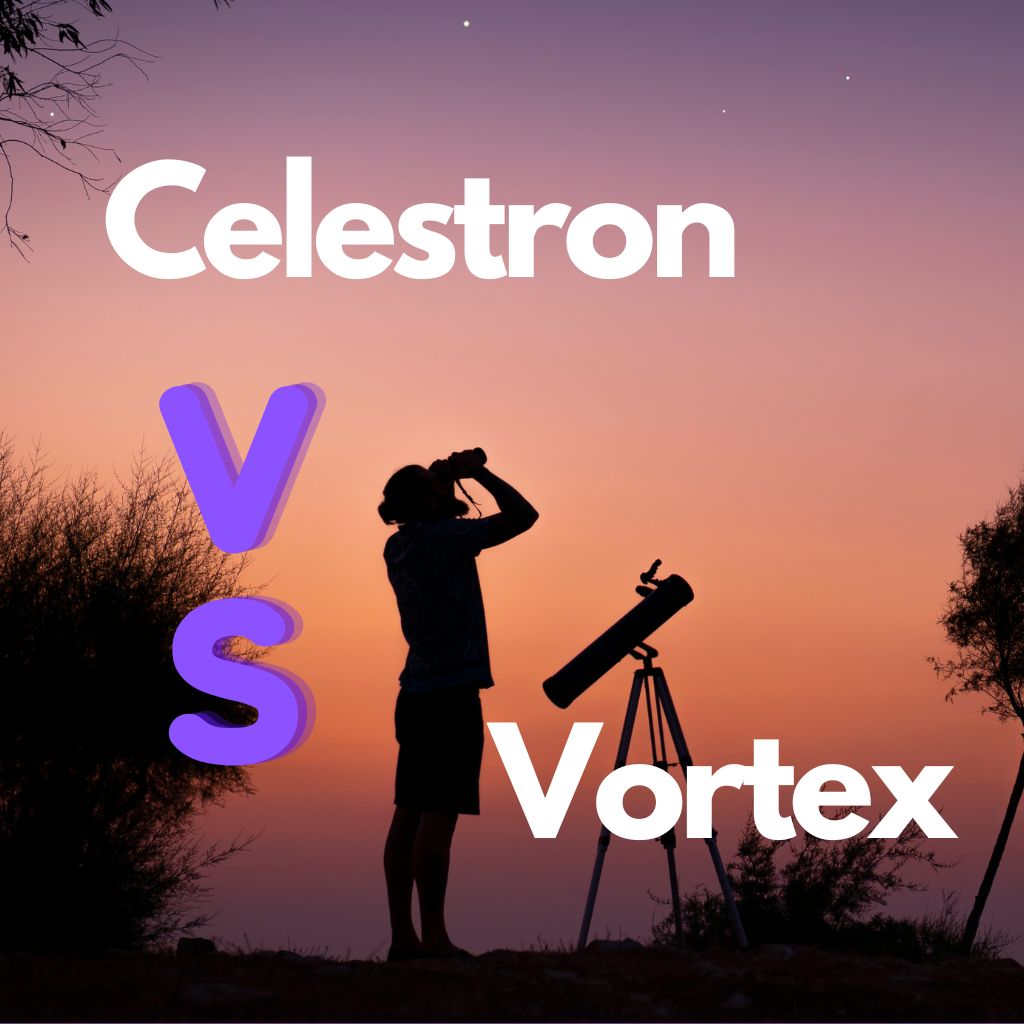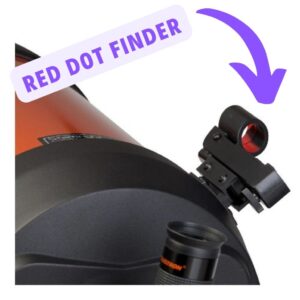This site contains affiliate links to products. I may receive a commission for purchases made through these links.
When it comes to high-quality optics, two names often come to mind: Celestron and Vortex. Both brands have earned their stripes in the market, offering a range of binoculars that are favored by professionals and hobbyists alike. But which one takes the cake?
Deciding between Celestron and Vortex can be a tough call, especially when you’re not sure what to look for. I’ve spent years exploring the ins and outs of these brands, and I’m here to help you make an informed decision. Whether you’re an avid bird watcher, a stargazer, or a sports enthusiast, there’s a perfect pair of binoculars out there for you.
Overview of Celestron and Vortex Binoculars
Founded more than five decades ago, Celestron has been providing top-notch observational tools to eager enthusiasts. They’re a trusted brand in the industry known for offering a wide variety of binoculars that cater to different needs. From astronomy binoculars for stargazing to marine binoculars for sea voyages, Celestron has something for everyone.
It’s important to note that Celestron binoculars are renowned for their premium glass and high-quality optical coatings. This means enhanced clarity and contrast for a more enriching visual experience.
On the other hand, we have Vortex. It’s a relatively new player – founded in 2002 – but they’ve quickly established a strong foothold in the market. Vortex’s speedy growth is largely credited to their commitment to customer satisfaction. They not only provide great products but also back them up with excellent service.
Among Vortex’s offerings, their Diamondback series is particularly popular. Suited for multiple applications – like hunting, birdwatching, or stargazing – it’s known for quality optics and solid durability.
To give you a clearer comparative picture of the two esteemed brands, here’s a short rundown of their core traits:
Celestron
- Founded in 1964
- Offers a wide variety of binocular types
- Known for high-quality optics
Vortex
- Founded in 2002
- Notable for excellent customer service
- Popular for the Diamondback series
With us delving into specific Celestron and Vortex models in the next section, you’ll be better equipped to decide which binoculars are right for you.
Factors to Consider When Choosing Binoculars
While you’re looking into Celestron and Vortex binoculars, it’s worth noting a handful of factors to determine the right fit for your needs. Pull up a seat and I’ll take you through a rundown on what to look for in a binocular, regardless of the brand.
First off, let’s talk about Optical Performance. Pay close attention to how well the binoculars perform in different light settings. Do they provide crisp, clear images in low-light conditions as well as bright light? Celestron is known for its premium glass and high-quality optical coatings but Vortex’s Diamondback series isn’t lagging behind in the race. Look for remarks on sharpness, contrast, and color accuracy.
Next up we have Build Quality and Waterproofing. You want your binoculars to last. They should be resilient against common elements like water and dust. A good seal is crucial to prevent internal fogging in high humidity or cold conditions. In this regard, both Celestron and Vortex binoculars deliver quite well.
In the third place is Ease of Use. Consider features such as adjustable eyepieces or diopter settings. A comfortable grip, easy focus, and adjustable components contribute to an overall user-friendly experience.
Lastly, but equally importantly, is Price to Performance Ratio. How much value are you getting for your money? I suggest that you consider the price range of the binoculars you are looking at and evaluate whether the features and performance they offer justify their cost.
To summarize these key factors, have a look at the table below:
| Factors to Consider | Importance |
|---|---|
| Optical Performance | High |
| Build Quality and Waterproofing | Essential |
| Ease of Use | Important |
| Price to Performance Ratio | Varied |
With these factors in mind, let’s dive deeper into the specifics of Celestron and Vortex binoculars. Comparing these brands based on these criteria will bring you closer to making an informed choice. Stay tuned for more in-depth coverage on each brand’s performance based on these factors.
Optical Performance
When it comes to binoculars, nothing matters more than optical performance. This is the real “measuring stick” for how your binoculars will perform in a variety of conditions.
My experience with Celestron and Vortex has shown me that both offer excellent sharpness and clarity. Let’s break each one down a little further.
Celestron’s binoculars commonly feature multi-coated lenses, which contribute to their high contrast images. You’ll notice the difference this makes when you’re spotting birds or viewing a distant landscape. Celestron also makes great use of Phase Coated BaK-4 prisms in most models. This, combined with their proprietary XLT coating technology, provides detailed, razor-sharp images.
Transitioning over to Vortex, it’s crucial to note that they’re applauded for their impressive image quality too. There’s a lot of detail packed into each wide field-of-view. Vortex binoculars often have fully multi-coated lenses, meaning each air-to-glass surface features multiple coatings. When you add in their premium roof prism design, you’re guaranteed bright images even in low light conditions.
Both Celestron and Vortex perform admirably with color fidelity, too. They render vivid hues without any spurious color or chromatic aberration, which could otherwise mar your viewing experience.
Below is a comparative table showing some key optical features of typical models from both brands:
| Celestron | Vortex | |
|---|---|---|
| Lens Coating | Multi-Coated | Fully Multi-Coated |
| Prism Type | BaK-4 | Roof Prism |
| Low-light Condition | Excellent | Excellent |
| Color fidelity | High | High |
The bottom line here? Both offer superb performance. However, remember that each model varies and these characteristics could change depending on the specific model you go for. There’s no one-size-fits-all. It’s about understanding your needs and choosing a binocular pair that meets them.
Build Quality and Durability
After considering optical performance, the next critical factor to discuss is Build Quality and Durability. Binoculars, by nature, are outdoor tools. They should withstand a fair amount of wear and tear during their lifetimes. Celestron and Vortex binoculars ware under analysis in this regard.
Starting with Celestron, their binoculars sport a robust and ergonomic design. Made with a high-quality rubber coated exterior, they’re able to endure both harsh weather conditions and accidental drops. Regardless of the outdoor conditions, Celestron binoculars seem to emanate resilience. A standout feature of their build is the waterproof and fog proof aspect in most models. This feature instills confidence when using Celestron binoculars in fluctuating weather patterns.
On the other hand, we have binoculars from Vortex. The integrity of Vortex’s build quality matches that of Celestron’s. These binoculars are built for the rugged outdoors with a sturdy construction. Many users appreciate the comfortable grip and balance, attributing them to the thoughtful design. Vortex also incorporates Argon purging within their optics, providing additional protection against dust and water.
Additionally, both brands offer commendable, well-regarded warranty policies. Celestron has a Limited Lifetime Warranty, and Vortex provides a VIP Unconditional Lifetime Warranty. These offerings mean paired with trust in their construction.
To summarize, both brands manufacture their binoculars with exceptional attention to durability. Yet, they do differentiate themselves with slight variations in build and offering different warranty types. Understanding these differences may guide the selection process in favor of a preferred brand over another.
Ergonomics and Comfort
Shifting the spotlight to ergonomics and comfort, the essential roles played by these factors are often overlooked when buying binoculars. They’re key criterion to consider, particularly for those planning on prolonged use of their binoculars. Celestron and Vortex excel in this aspect with their unique designs aimed at optimal comfort and ease-of-use.
Celestron binoculars have been intentionally constructed with ergonomic thumb indents and finger ridges for added grip. This design, coupled with the binoculars’ rubber coating, ensures a comfortable and secure hold even during extended periods of observation. They’ve kept the weight balance in check, making it easier for you to hold them steady. This thoughtful attention to user comfort makes Celestron stand out in the market.
On the other hand, Vortex binoculars have put an emphasis on compact and balanced design. They’ve gone a step further with adjustable eyecups for increased comfort, especially for eyeglass wearers. Their easy-to-use focus wheel, located at a convenient position, facilitates quick adjustments, making them a delight to operate.
Take their individual neck straps for instance. Celestron offers a wide, padded strap making long outings manageable while Vortex offers an easily adjustable harness system spreading the binoculars’ weight evenly across your shoulders. Small characteristics such as these are a significant consideration for the end users and both brands genuinely cater to these needs.
When we delve into the crudeness of each detail, ergonomics and comfort distinguish the two brands, giving each its unique identity. However, it’s also a matter of personal preference. Based on the models you choose from either brand, one may find a more comfortable experience over the other.
So, as you venture to equip yourself with a new binocular, remember to evaluate these factors. From grip and balance to adjustability and weight distribution, comfort and ergonomics matter.
Price and Value for Money
Jumping into the matter of price and value, we must stress the point that when it comes to these two brands, you’re essentially paying for quality. It’s no secret that binoculars can be a hefty investment. Yet, the feeling of satisfaction you get after you’ve made a worthwhile purchase simply cannot beat.
Celestron and Vortex, both brands don’t exactly fall into the category of ‘budget-friendly’. Far from it. However, they justify their pricing with the quality and features they offer, ensuring that your investment isn’t going to waste.
Let’s dissect a little deeper. Vortex binoculars are, well-known for their quality. They often come equipped with premium features such as HD optical system, XR fully multi-coated lenses, and a locking diopter, not to mention their robust built quality. It’s safe to say then, it’s worth every cent.
Celestron binoculars, on the other hand, come with their own bagful of excellent features. High quality lenses, wide field view, fully coated optics – all of which take a backseat to nothing. In addition to this, they offer a wide variety of products, suitable for all price ranges.
I’ve whipped up a quick comparison table, so you can get an overview:
| Brand | Key Features | Price Range |
|---|---|---|
| Vortex | HD optical system, XR fully multi-coated lenses, locking diopter | $$$ |
| Celestron | High quality lenses, wide field view, fully coated optics | $$-$$$ |
To sum up this section, Celestron and Vortex binoculars both offer binoculars with commendable features. They’re not exactly the cheapest brands out there but if you’re looking to get your money’s worth in terms of quality and durability, we can vouch for either. It’s really a matter of price points and what special characteristics you’re looking for in your binoculars that would tip the scales.
Customer Reviews and Reputation
When it comes to feedback from the people who matter the most – the customers – the reputation of both Celestron and Vortex binoculars holds firm. I poured over countless reviews and, overwhelmingly, users of both brands have expressed satisfaction over their purchases.
Vortex binoculars secure top marks for their premium features. Many customers commend the crisp and clear HD visual experience offered by these binoculars. The fully multi-coated lenses and locking diopter also garner positive comments. Furthermore, Vortex has seemingly etched its name as a forerunner in reliability. It’s got a pretty solid warranty policy and post-sales customer service. The latter being a crucial factor that sways buyer decisions in favor of Vortex binoculars.
On the other hand, Celestron binoculars also receive rave reviews. Users appreciate the high-quality lenses that enhance the viewing experience and the wide field of view that the binoculars provide. Celestron’s ease of usage and ergonomic design are frequently mentioned in 5-star reviews. Not to mention the fully coated optics seem to have hit home for many bird watchers and nature enthusiasts. The brand also basks in the glory of past successes, with Celestron being a household name in high-quality astronomical equipment for years.
While there’s no decisive winner in customer ratings, it’s indisputable that both brands have carved their niches in the binoculars market. Each brand offers quality binoculars that cater to different preferences. Both have been successful in garnering a base of loyal customers. It’s no surprise given the unique selling propositions and remarkable features of Celestron and Vortex binoculars. I’ll leave it up to you to decide where your loyalty lies. But rest assured, no matter your choice, you’re getting a great pair of binoculars, built to last and impress.
Conclusion
It’s clear that both Celestron and Vortex binoculars offer stellar performances. If you’re after premium features and reliability, Vortex won’t let you down. But if a wide field of view and high-quality lenses are your top priorities, Celestron is the way to go. Both brands have proven themselves in the market and have a dedicated following of satisfied customers.
So, whether you opt for Celestron or Vortex, you’re sure to end up with a fantastic pair of binoculars that will enhance your viewing experience. Your choice will ultimately depend on your specific needs and preferences. Happy viewing!






